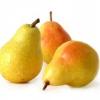I would need your help to interpret a result after my annual blood works.
I have a low leucocytes count (3.6 G/L, range 4.0-11.0) and wonder about your knowledge/experience with this.
Neutrophils obviously also lowered (as they count for the most fraction of WBC) but are in norm. I always had total leucocytes it in the low normal and 10 years back or so several time also outside norm. I am a bit concerned as my father suffered from leucopenia toward the end of life and I might be at increased risk of infections. There are thoughts in the literature (can retrieve that) about lowering the norm as it is a marker of chronic inflammation but it did not happen. I did introduce recently some intermittent fasting and I read in this community CR might lower the number. All typical inflammation markers (hr-CRP, ferritin, ESR, ..) are very fine and actually some also slightly lowered. I am currently 64, eat healthy, exercise and supplement. I also use a low dose metformin. I am in good general health but unfortunately do also have some conditions related, fighting an asymptomatic chronic pulmonary infection which requires control and infrequent herpes fire ups, so I am very careful to prevent acute infections and monitor immune/inflammatory markers.
Comments, suggestions? Thank you!
(edit: spelling)
Edited by albedo, 27 July 2019 - 11:43 AM.
















































